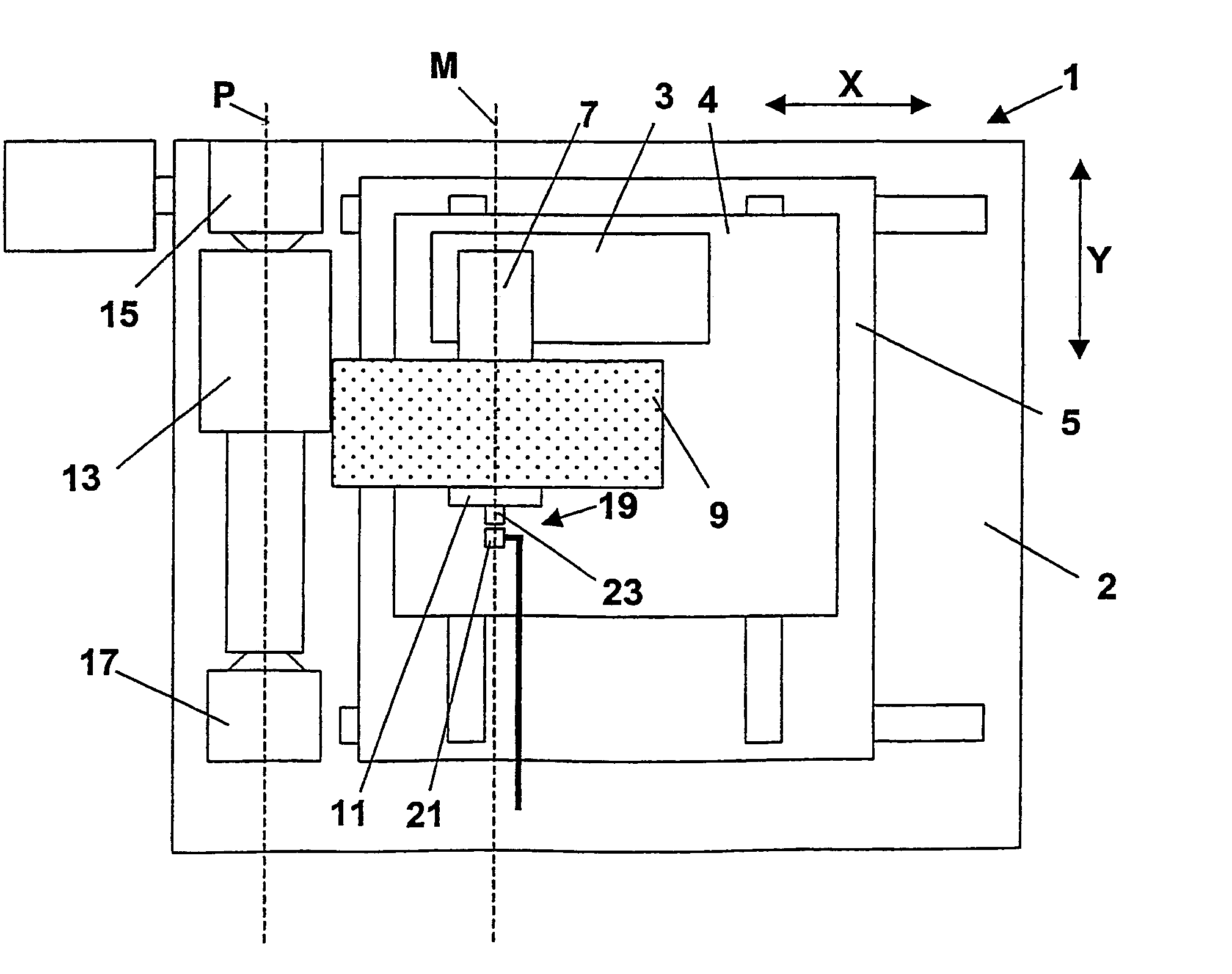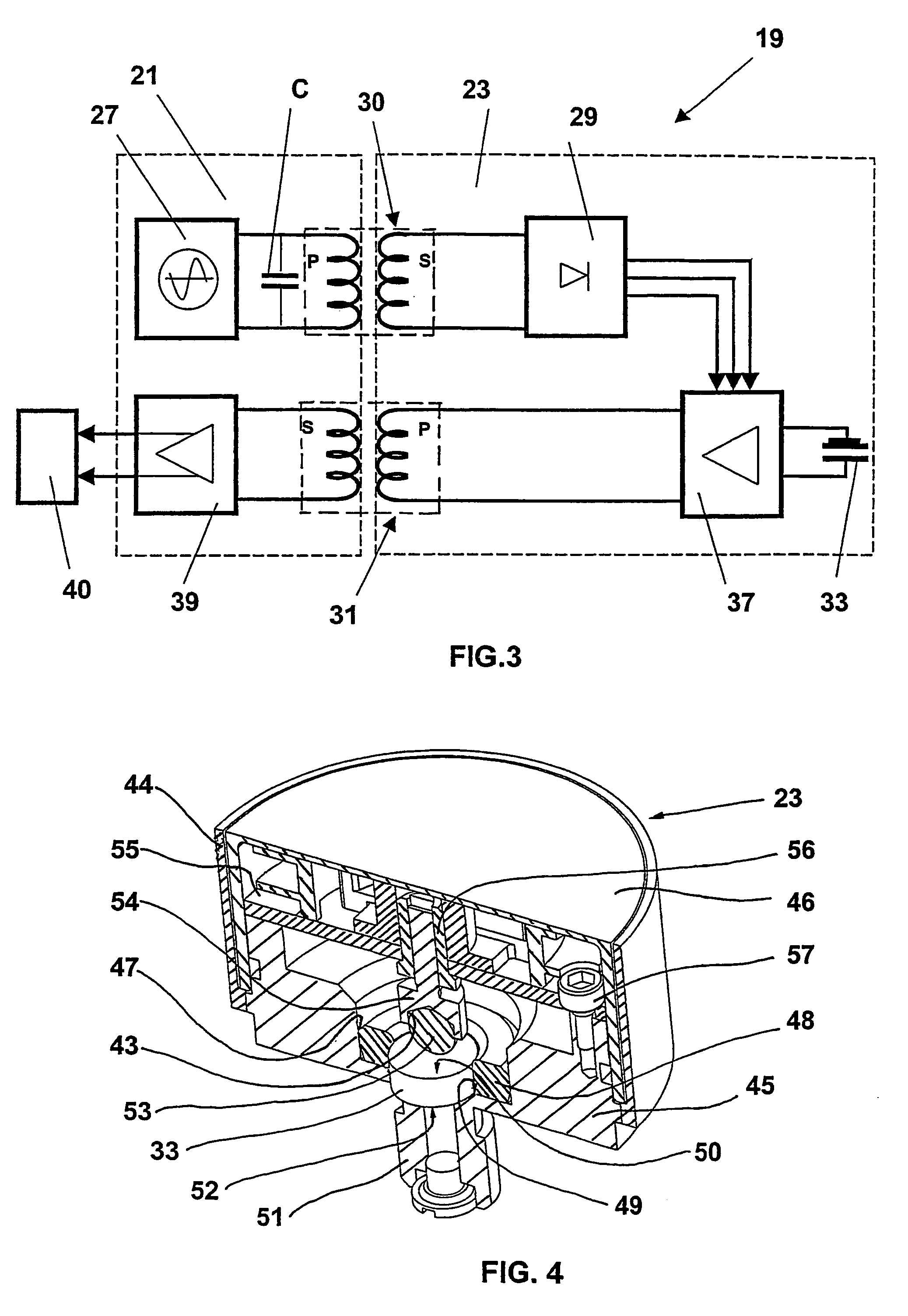Acoustic sensor for monitoring machining processes in machining tools
a technology of machining process and acoustic sensor, which is applied in the field of acoustic sensors, can solve the problems of poor performance in consideration of the limited frequency range, the difficulty of detecting said contact, and the difficulty of checking the machining process performed by an acoustic sensor operating in the said frequency rang
- Summary
- Abstract
- Description
- Claims
- Application Information
AI Technical Summary
Benefits of technology
Problems solved by technology
Method used
Image
Examples
Embodiment Construction
[0019]FIG. 2 is an extremely simplified and partial plan view of a machine tool, more specifically a computer numerical control (“CNC”) grinding machine 1 including a bed 2, a tool-carrier 3, more specifically a wheel-carrier, coupled to a slide 4, that can displace relative to bed 2 along an axis Y and is, on its turn, coupled to a slide 5 that can displace relative to bed 2 along an axis X, in such a way that the tool-carrier 3 can perform movements in plane XY relative to bed 2. A spindle, for instance an electrospindle 7, is carried by the tool-carrier 3 and a grinding wheel 9 is coupled, by means of a flange 11, to the electrospindle 7. The electrospindle 7 causes the grinding wheel 9 to rotate about a longitudinal axis M.
[0020]The grinding machine 1 is utilized for the machining of a mechanical piece 13, with rotational symmetry, for example a shaft, supported, referenced and made to rotate about a longitudinal axis P, parallel to the longitudinal axis M, by means of a support...
PUM
| Property | Measurement | Unit |
|---|---|---|
| shape | aaaaa | aaaaa |
| elastic | aaaaa | aaaaa |
| cylindrical shape | aaaaa | aaaaa |
Abstract
Description
Claims
Application Information
 Login to View More
Login to View More - R&D
- Intellectual Property
- Life Sciences
- Materials
- Tech Scout
- Unparalleled Data Quality
- Higher Quality Content
- 60% Fewer Hallucinations
Browse by: Latest US Patents, China's latest patents, Technical Efficacy Thesaurus, Application Domain, Technology Topic, Popular Technical Reports.
© 2025 PatSnap. All rights reserved.Legal|Privacy policy|Modern Slavery Act Transparency Statement|Sitemap|About US| Contact US: help@patsnap.com



